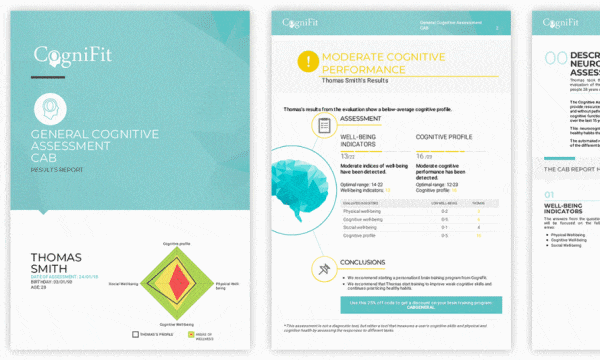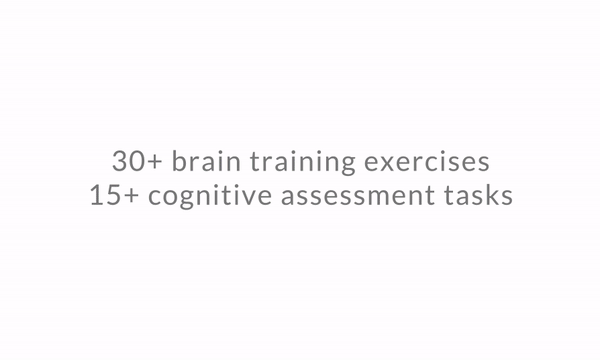
Types of Memory: Learn everything you need to know
Where did you put the keys? Why does she look so familiar? What was his name again? This is a situation we have all been at one point or another. That feeling like we don’t remember where we were going, or what we had on our to-do list for tomorrow. All these situations have in common one cognitive skill: memory. There are different types of memory that can explain why sometimes we are forgetful about certain things and not others. Learn everything about the different types of memory in this article.
Memory is one of the cognitive abilities that we use daily, without even knowing it. It allows us to properly store new information in our brain so that it can be easily recalled later. Even though this process is intuitive, it’s a lot more complicated than it seems because we have different types of memory. Like other cognitive skills, types of memory can also be assessed. There are many ways of assessing types of memory, from standard testing such as the Weschler’s scales to CogniFit online General Cognitive Assessment.

General Cognitive Assessment Battery from CogniFit: Study brain function and complete a comprehensive online screening. Precisely evaluate a wide range of abilities and detect cognitive well-being (high-moderate-low). Identify strengths and weaknesses in the areas of memory, concentration/attention, executive functions, planning, and coordination.
The good news is that this complex cognitive ability can be trained by practicing specific memory exercises. Even though we’re not always aware of it, we can do things to train our memory to keep it from deteriorating prematurely. It’s much more effective to prevent its decline and boost our memory while its still in shape than to wait until we see signs of memory problems. Memory problems cause anxiety in those who suffer, which is why more and more people are starting routines to help them improve their cognitive functions. Many scientific studies have shown that memory is one of the cognitive abilities that can be trained with exercises designed by neurologists and specialists.
Types of Memory
The main two types of memory are the short-term memory and long-term memory based on the amount of time the memory is stored.
Short-Term Memory: the memory mechanism that allows us to retain a certain amount of information over a short period of time. Short-term memory temporarily retains processed information that either fades quickly or turns into a long-term memory. It is limited and has two objectives. The first is to keep information in our brain without it being present, and the second is to manage this information so that it can be used in higher mental processes.
Long-term Memory: Long-term memory could be defined as the brain mechanism that makes it possible to code and retain an almost unlimited amount of information over a long period of time. The memories stored in long-term memory can last for up to a few years.
Types of Memory related to short-term memory
Types of Memory: Sensory Memory
We receive sensory memory through our senses and it lasts for a very short period of time, about 200 to 300 milliseconds. This information can be visual, auditory, tactile, smell, etc. These memories either fade or are stored in short-term memory. The information only lasts for as long as it takes to be processed and stored.
Types of Memory: Working Memory
Working memory, or operative memory, can be defined as the set of processes that allow us to store and manipulate temporary information and carry-out complex cognitive tasks like language comprehension, reading, learning, or reasoning. Working memory is a type of short-term memory. Its capacity is limited We are only able to store 5-9 elements at a time. It is active. It doesn’t only store information, it also manipulates and transforms it. Its content is permanently being updated and it is modulated by the dorsolateral frontal cortex.
Once you have assessed the different types of memory, there are different types of activities that help improve them. From games such as Sudoku to full on personalized brain training.

CogniFit Brain Training: Trains and strengthens essential cognitive abilities in an optimal and professional way.
Types of Long-term Memory
Types of Memory: Declarative
Declarative Memory is the information stored in our memory systems that can be explained and recalled voluntarily and consciously. The brain systems related to this memory system are the medial temporal lobe, the diencephalon, and the neocortex, and is divided into two parts.
Types of Memory: Semantic
Semantic Memory refers to the set of information that we have about the world around us. This information is unrelated to how or when it was learned and includes vocabulary, academic concepts, or anything that we know about a certain subject. For example, you know that an apple is a fruit that you can eat, that there are different colored apples, and that it comes from the apple tree, but you probably don’t remember when you learned this information.
Types of Memory: Episodic
Episodic Memory includes the concrete experiences that we have lived and has a very close relationship to how and when information is learned. For example, remembering what you ate for dinner last night, where you parked your car, when you visited a certain city for the first time, who you went to a certain party with, or when you met that person.
Types of Memory: Non-Declarative or Implicit
Implicit Memory is stored in your memory systems, but can’t be talked about. It is usually acquired or incorporated through implicit learning (you may not be conscious that you’re learning it). This type of memory is quite resistant to brain damage, which usually leaves it less affected than other memory systems. This type of memory uses different parts of the brain, like the neocortex, the amygdala, the cerebellum, and the basal ganglia. It also includes other subdivisions. This is used subconsciously and helps to learn new skills like driving or riding a bike.
Types of Memory: Procedural
Procedural Memory is made up of information of muscular movements that we have learned to automatize through practice, like habits and other skills. For example, riding a bike, throwing a ball, or moving a computer mouse.
Types of Memory: Priming
Priming refers to the ease with which we activate and remember a certain concept in our minds. For example, you would probably remember the word “sedan” quicker if you were talking about “cars”, “trucks” or “convertibles”.
Types of Memory: Classical Conditioning
Classical Conditional relates to the link between a conditioned stimulus and a response that has previously been associated with an unconditioned stimulus. For example, if you hear a bell chiming (conditioned stimulus) before blowing air in your eye (unconditioned stimulus), hearing the bell chime would be enough to cause you to blink (conditioned response). This relationship forms part of the non-declarative or implicit memory
The use of all of these types of memory is essential in our day-to-day, as it is one of the cognitive abilities that we use constantly.














